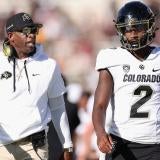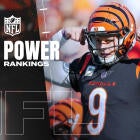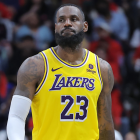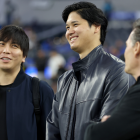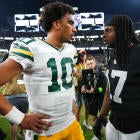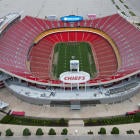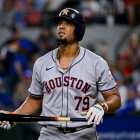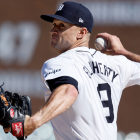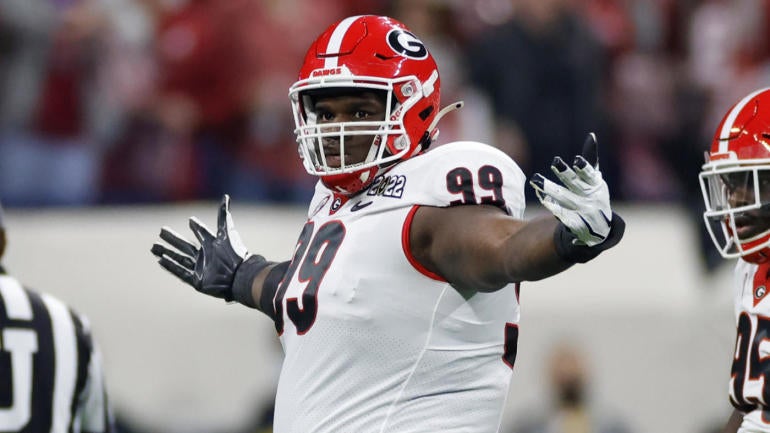
As NFL draft season stretches into late April, a multitude of thoughts about prospects or the class as a whole become viewed more as fact than opinion. But in a few years, we'll ultimately look back on the accepted-as-fact ideas with this class and realize they were way off.
After watching around 300 prospects in preparation for the 2022 NFL Draft, I've landed on a variety of opinions myself that don't exactly align with consensus thoughts with a little over a week until the start of the draft. I've listed all eight of them below.
We should be a little worried about Devin Lloyd in coverage
Starting scorching hot because everyone and their brother adores Lloyd as a prospect. I like him too. He's athletic, rangy, and plays with reckless abandon. He's just a bit of a project in coverage. And it's not really his fault. He's not as raw as, say, Kenneth Murray or Jordyn Brooks were -- two 2020 first-round linebackers -- but often he was deployed as a blitzer or edge rusher in college and was moderately successful in doing so, therefore I don't blame the Utah coaches.
However, Lloyd is not Micah Parsons 2.0, so he's going to have to cover in the NFL, or he's going to be a liability for his team on 60% of the opposing offense's snaps. That's concerning.
Skyy Moore is a first-round receiver
Moore is universally liked in the scouting community. I'm certainly not the only analyst raving about his game. But it feels like, despite the widespread adulation, he's bound for the second round. Why? Because he's 5-foot-10? He's an inch shorter than Jahan Dotson, who's often mocked in Round 1, but has nearly 20 pounds on him.
Moore crushes the hopes and dreams of cornerbacks off the line of scrimmage, he runs sharp routes, he's a speedster with an enormous catch radius -- the hands over 10 inches help -- and he is a tackle-breaking machine with the ball in his hands. Take a deep breath, say it with me: "Skyy Moore is a first-round receiver."
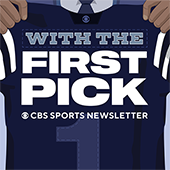
With The First Pick Newsletter
With The First Pick Newsletter
Prepare for the upcoming NFL Draft with the day’s big stories + mock drafts, big board updates and more.
Thanks for signing up!
Keep an eye on your inbox.
Sorry!
There was an error processing your subscription.
Arnold Ebiketie is a first-round prospect
No joke, the only knock I have on Ebiketie is that he's already 23 years old. Everything else about his game belts "first-round pick" from the rooftops. He was wildly productive as a pass rusher in his only season at Penn State -- after transferring from Temple. Why was that? Because his traits are spectacular.
He's got burst, bend, dip ability, jolting speed-to-power conversion, initial pass-rushing maneuvers, counters off them, and serious closing speed to the quarterback. Want some numbers on this? Ebiketie had a "pass-rush win rate" of 22.9% in 2021, one of the highest figures in the class. For reference, that rate is only a few percentage points lower than Aidan Hutchinson's. Per Pro Football Focus, only 19% of Ebiketie's career pressures were of the unblocked/clean-up. So lower is better here. Hutchinson and Thibodeaux's rate -- 25%. Jermaine Johnson's, 35%. Travon Walker had 45% of his career pressures of the unblocked/clean-up variety. Speaking of which ...
Travon Walker should be drafted in Round 2
Gregory Rousseau was the ultimate developmental edge rusher in the 2021 class. This year, it's Walker, and he's even a more striking example. He rocked the combine, but for someone being considered for the No. 1 overall pick, he was wildly under-productive in college at Georgia.
And I get it regarding Walker for those who love him. The Georgia defense doesn't ask its edge rushers to fly upfield on every snap. But it's not as if that was the case for Kayvon Thibodeaux at Oregon, and he was significantly more productive when he was instructed to get after the quarterback as fast as possible.
Walker has two key elements missing from his game right now; one is technical and one is natural. He doesn't use his hands effectively to dispatch blocks as a pass rusher, and he's not bendy around the corner. His size -- 6-5, 272 pounds -- and measured athleticism indicate he has what it takes physically to has a sustained career in the NFL. But there should be a "project" footnote on his draft profile, something I wouldn't want on a prospect bound to go inside the top 5 who could be the first overall pick.
He's so far behind in the pass-rush move area that he graded as a second-round pick in my scouting gradebook.
Jordan Davis belongs in the second round
My rationale here is twofold. There aren't many positions less valuable or more easily replaceable than nose tackle and I simply don't think Davis is nearly as awe-inspiring on the field -- especially in pass-rushing situations -- as he was at the combine with one of the best workouts in event history.
Davis doesn't play with discernible pass-rush moves, a foundational concern for any defensive lineman. And at nearly 6-7, he has a naturally high center of gravity that unfortunately robs him of some of his inherent power. Plus, he's not quite as explosive as his 4.78 time in the 40-yard dash would indicate. Will he be an impactful run defender who occasionally pushes the pocket? Sure. Can you find a strong, wide-bodied run-stuffer who can be a similarly impactful pass rusher much later in the draft? Absolutely. Because of that, I can't jump on board with Davis super early in Round 1, or, really, in the first round at all.
Drake London's YAC skills are being underrated
At a shade under 6-4 and 219 pounds, London plays how the average fan would expect him too -- he ferociously rebounds the football down the field. In fact, his 17 contested-catch "victories" led all of college football last season, and he only appeared in eight games before getting injured.
Oddly enough though, it feels like the lede is being buried with London's draft profile. He forced 22 missed tackles in those eight games. Garrett Wilson was credited with 19 forced missed tackles in 13 contests. Treylon Burks? Fifteen of them in 13 outings. And Chris Olave just one on his 65 receptions. And London's a moose in the open field, powering through anything resembling a less-than-assertive tackling attempt en route to accumulating extra yardage.
This WR class is good, but it's not super deep
I have seven first-round grades on receivers. Up top, I like this wideout class. Is there an elite, Ja'Marr Chase type? No. And it was widely believed early in the pre-draft process that it was a deep group in which Day 2 and even early Day 3 featured a variety of awesome prospects at the position.
Having comprehensively examined this class, I don't feel that way. If you tell me Skyy Moore and George Pickens will be picked in Round 2, then sure, those two would represent some quality depth. After that, the vast majority of the receivers aren't multi-dimensional, well-rounded players. There are burners -- Baylor's Tyquan Thornton, Memphis' Calvin Ridley -- YAC specialists -- Boise State's Khalil Shakir, Tennessee's Velus Jones Jr. -- and even some big bodies like North Dakota State's Christian Watson and Cincinnati's Alec Pierce. All of them have noticeable flaws on film that will be exploited early in their NFL careers.
If you're a receiver-needy team, it wouldn't be a brutal idea to double-dip at receiver in this class, and yeah, someone picked outside the first round will ultimately become a quality pass catcher. But the true, sure-fire game-changers will be picked in the first round.
Kyler Gordon is a better prospect than Trent McDuffie
Here's my theory on why McDuffie is mostly regarded as a better cornerback prospect than Gordon -- McDuffie was simply initially ranked higher than Gordon, so it's difficult for some to flip the two this late in the process.
Gordon is just better. He's longer, more explosive, way more flexibility, nastier flying down to help out for the run game and is equally as good -- if not better -- attacking the ball in the air. OK, so McDuffie has better timed speed. To me, when it comes to covering receivers and finding the football, whether it be arriving via a pass attempt or in a ball carrier's hands, Gordon is better than his Washington teammate.
Leo Chenal does not play to his combine/pro day workout
At a whopping 6-2 5/8 inches and 250 pounds, Chenal ran 4.55 with a 41-inch vertical (96th percentile among linebackers) and a 128-inch broad jump (94th percentile). But the Wisconsin product doesn't play to that level of explosiveness on the field. I love him as a blitzer, and Chenal is a devastatingly big hitter between the tackles.
I actually thought fairly often on film he looked heavy-footed. Now, in a straight line, he's a train. Chenal's lack of high-caliber change-of-direction capabilities scares me. There's an outside chance he carves out a role as a true enforcer at the strong-side linebacker spot, but even in that specific position today, you have to be able to cover, and Chenal is nowhere near ready to be an NFL coverage linebacker. He did not have a pass breakup or interception in 2021 and was mostly deployed downhill in passing situations. He's simply not as comfortable or athletic when sinking in coverage as he is thundering downhill.








